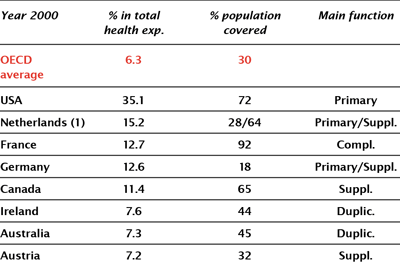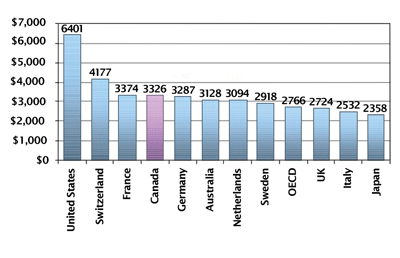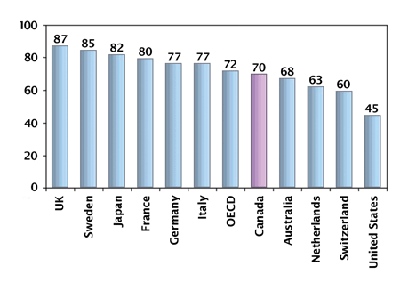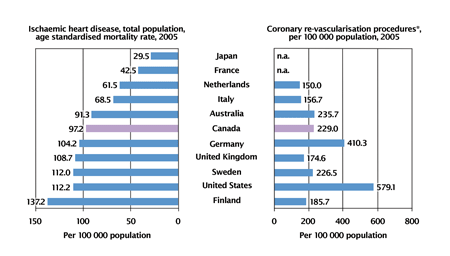By Peter Scherer
Comparative data helps situate Canada in international context. In this article, the OECD's Peter Scherer tracks certain trends apparent in all developed nations over the past few decades. —Report from a presentation at the 2008 conference of the MUHC-ISAI
Spending trends
Canada is very close to the OECD average in terms of total per capita spending on health care (Figure 1). There has been a persistent upward trend in health spending as a share of GDP across most OECD countries. In Canada, the increase paused in the 1990s — and may in fact have fallen for two years from 1994 to 1996 — and only recently reached the share it had a decade and a half ago. The other notable exception to the trend is Finland, where per capita spending actually fell as a result of the country’s economic shock at the end of the 1980s. In most OECD countries, the share of GDP devoted to health spending has continued to increase even, as in France, during years when real GDP fell.
Public spending
The public share of total spending is high in Canada, but by no means the highest amongst OECD countries (Figure 2). The belief that Canadian health care is predominantly publicly funded only holds true in a North American context. And even there, the US government spends $500 more per person per year on health care than does the Canadian government.
Private spending
Private expenditures in each country can be divided into out-of-pocket spending and private spending through the intermediary of health insurance. Half of Canada’s private funding is from out-of-pocket expenditures, which is greater than the percentage of out-of-pocket payments in the private share of US spending. The high private sector share in the US is funded mostly through voluntary insurance.
Table 1 shows the contribution of voluntary insurance to total health care funding in OECD countries and also describes whether this insurance is primary, supplementary, complementary or duplicative. In the US, voluntary insurance is primary, accounts for fully 35% of total health expenditure and covers 72% of the population. In no other OECD country does the contribution of voluntary insurance account for more than 15% of total spending. Canada sits at 11%, which is primarily for the supplementary drug insurance held by 65% of Canadians.

Table 1. Voluntary insurance in OECD countries
Source: OECD 2004, Private Health Insurance in OECD Countries
If we disaggregate total private spending by categories of expenditure, we see that private expenditure as a percentage of in-patient care is very low in Canada, similar to France and Germany. When it comes to ambulatory care, Canada looks very much like other OECD countries. For pharmaceuticals, Canada relies much more heavily on private expenditure than do other OECD countries except the US.
Health care performance
Until recently, we have had only very basic comparable data on what different countries achieve with their health care spending, namely life expectancy and infant mortality. The OECD is now starting to publish comparative reports on indicators of the quality of care, including both processes (such as screening rates for cancer and rates of retinal exams in diabetics) and outcomes (such as cancer survival rates and 30-day mortality following heart attack or stroke). Canada is among the better performers for breast, cervical and colorectal cancer five-year survival rates, and does slightly better than the OECD average in 30-day survival after admission for acute myocardial infarction.
Another measure of health system performance seeks to address the responsiveness and the appropriateness of health care: how well do expenditures on different interventions correspond to the incidence of a given condition? Figure 3 presents heart disease incidence and treatment rates in various countries and we see that the relationship between the two is highly variable. US rates of coronary revascularization appear very high relative to overall incidence of coronary disease, while intervention rates in the United Kingdom and Finland appear very low. Canada ranks close to the middle in the relationship between incidence and intervention rates.








